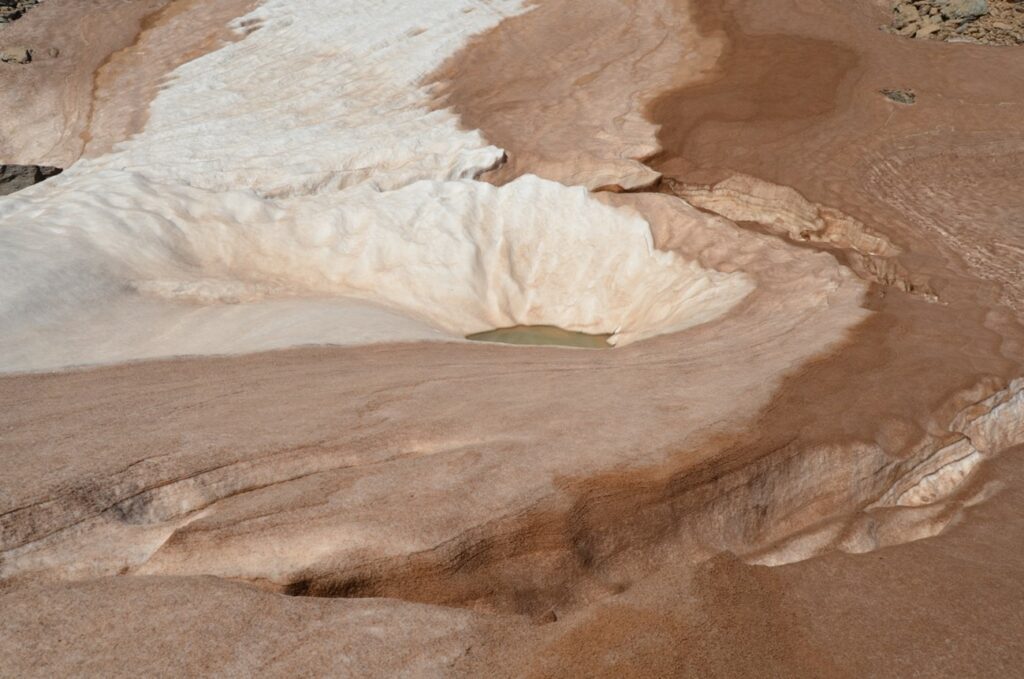The deposition of atmospheric aerosols, such as mineral dust, is a climatic variable whose impact on humans and ecosystems is gaining importance. The role played by atmospheric depositions on Mediterranean ecosystems has not been sufficiently studied, although the data that are becoming available indicate that atmospheric particulate matter, and in particular mineral dust from the Sahara desert, represents one of the main inputs of nutrients and trace elements, among other components, to terrestrial and aquatic ecosystems in the Mediterranean area.
Surface mineral dust concentration monitoring in the Granada and Sierra Nevada area.
MERRA-2 (Modern-Era Retrospective analysis for Research and Applications, Version 2) is a database of meteorological variables with daily information from the early 1980s to the present. This large dataset assimilates and reanalyzes information on multiple variables, such as atmospheric aerosol, from various sources of surface measurements and satellite remote sensing. The MERRA-2 pixel in which Granada and the peaks of the Sierra Nevada are partially included (Figure 1) covers an area of 55 x 70 km (Figure 2).
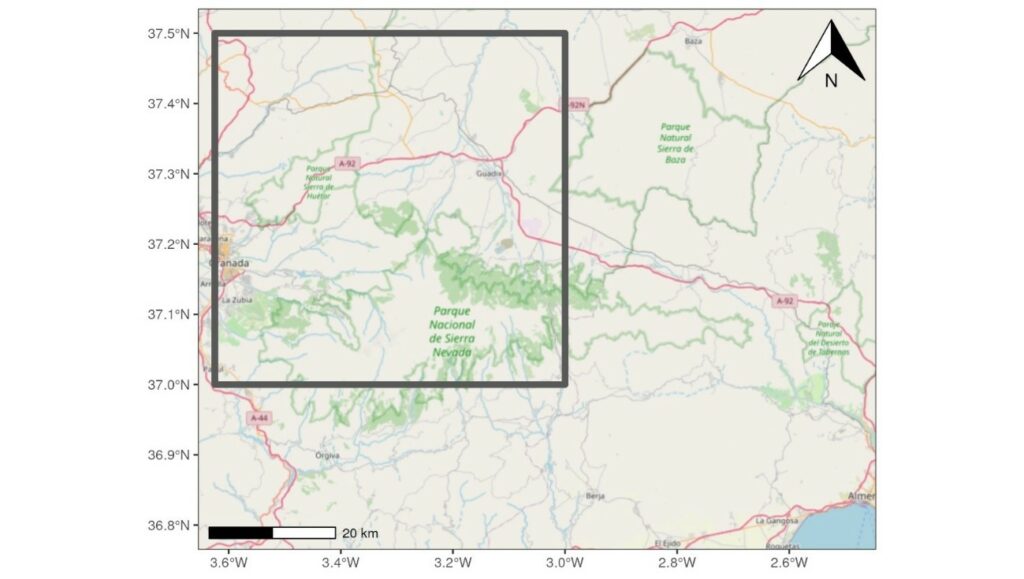
One of the variables provided by MERRA-2 is the surface mineral dust concentration in units of micrograms per cubic meter (µg/m3). In Figure 2 we can see the annual averages of surface dust concentration for the MERRA-2 pixel. We can observe the interannual variability of the last 40 years as well as an increasing trend in dust concentration, obtained by linear regression. This increasing trend was favored in part by the sharp increase in dust concentration observed in the year 2022, due to the high number of Saharan dust intrusions that took place during that year in the region (Calima returns to Granada; Calima and rains return to Andalusia at the beginning of the week: how many days will it last?).
The World Health Organization (WHO) has set a threshold value for the concentration of coarse particulate matter (PM10) at the surface. at 50 µg/m3indicating that higher values pose a risk to human health. Figure 3 shows the number of days per year on which this threshold was exceeded (red bars) in the study area since 1980. The figure also shows the number of days which exceeded the threshhold of 100 µg/m3 (blue bars), indicating extremely high dust concentrations. In the year 2022, a total of 77 days (21% of the year) showed concentrations higher than the threshold value of 50 µg/m3, while on 35 days se superó el valor extremo de 100 µg/m3. Estos datos, convierten al año 2022 como el año con mayor número de días con concentraciones de polvo dañinas para la salud humana de los últimos 40 años, según la serie histórica de MERRA-2, para el área de Granada-Sierra Nevada.
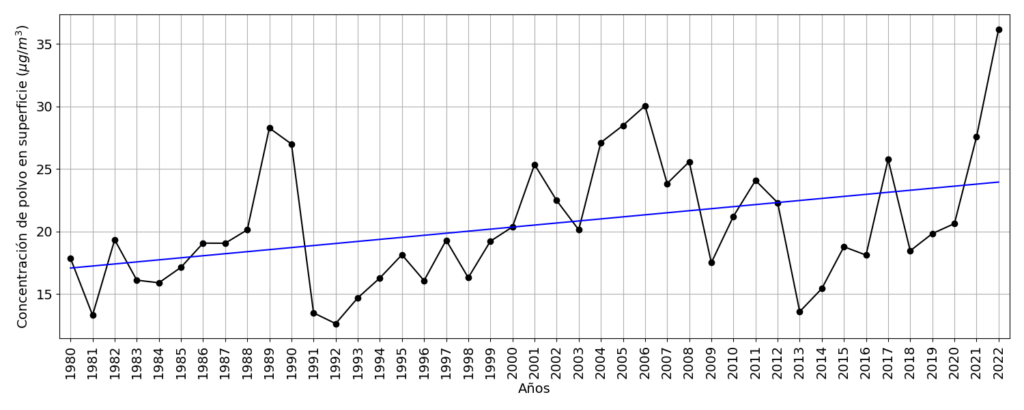
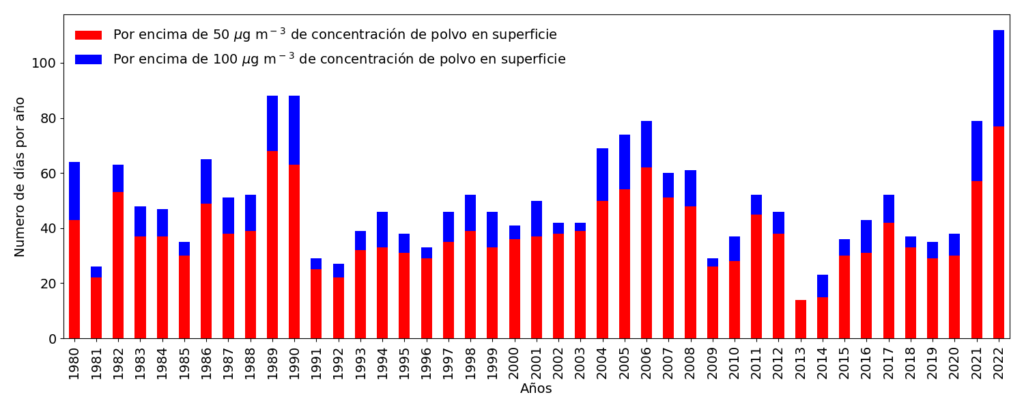
The presence of dust on our planet is a natural phenomenon. However, in recent decades, there has been a trend towards an increase in the amount of dust particles in the atmosphere (a phenomenon known as global dimming https://doi.org/10.1256/wea.210.03), which is of concern due to the negative effects it can have on human health and the environment in general.In addition, the study of the large variability of the amount of dust is of great relevance to understand its global impact. In this sense, it is becoming increasingly evident that we must pay attention to the growing trend in the amount of dust in suspension in the atmosphere, due to the impact it will have on climate, ecosystems and human health itself. A better characterization of mineral dust concentration as well as a better understanding of the relationship between haze events and climate change will help to mitigate these effects. Our ultimate goal is to understand and monitor the effects that this dust deposition may have on Sierra Nevada ecosystems (e.g., fertilization of crops, meadows and forests, increased turbidity and primary production in high mountain lagoons, etc.). Figure 4 shows an example of the impact of the Saharan dust input in 2022 on the snow cover and lagoons of the Sierra Nevada. The turbidity of the water in many Sierra Nevada lagoons increased exponentially, significantly affecting photosynthetic activity and all ecological processes of production and decomposition. On the other hand, the accumulation of dust on the snow causes it to melt earlier as it absorbs more solar radiation, altering the functioning of the headwaters of the river basins.
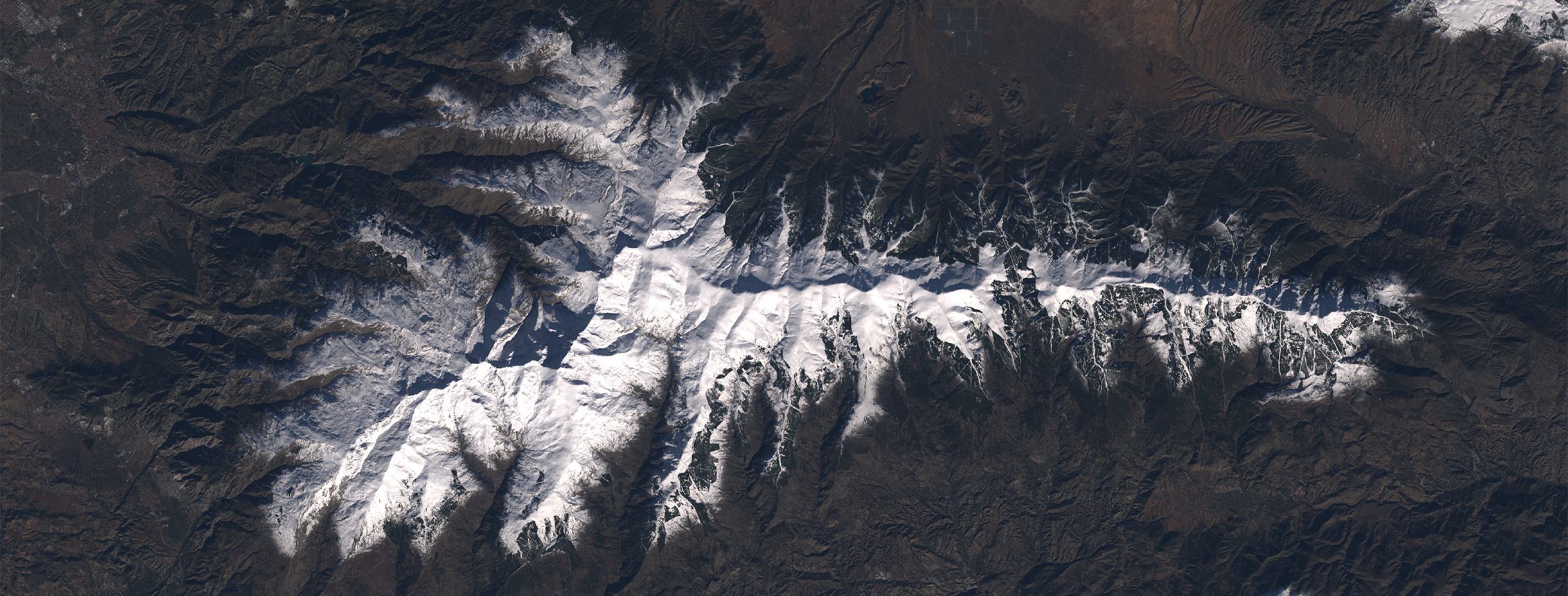
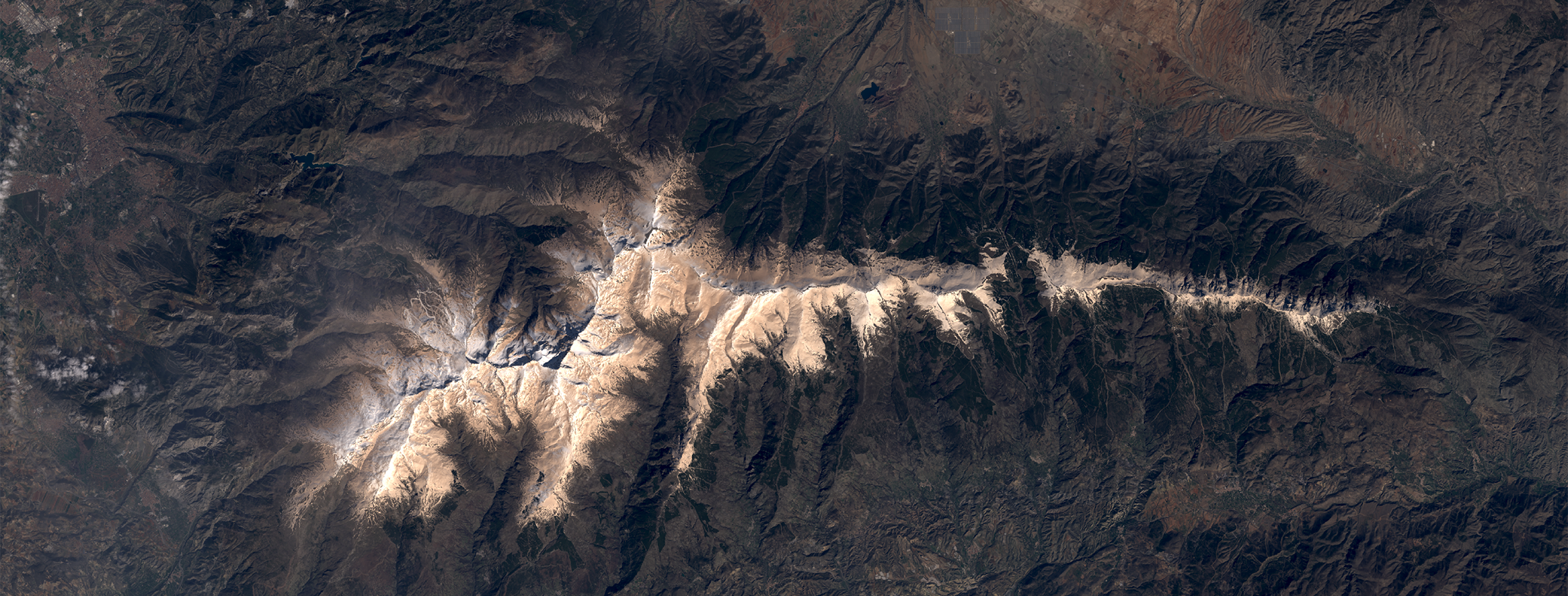
Figure 5: Images of Sierra Nevada from Landsat 8 satellite corresponding to the months of January (left) and February (right) 2017.

